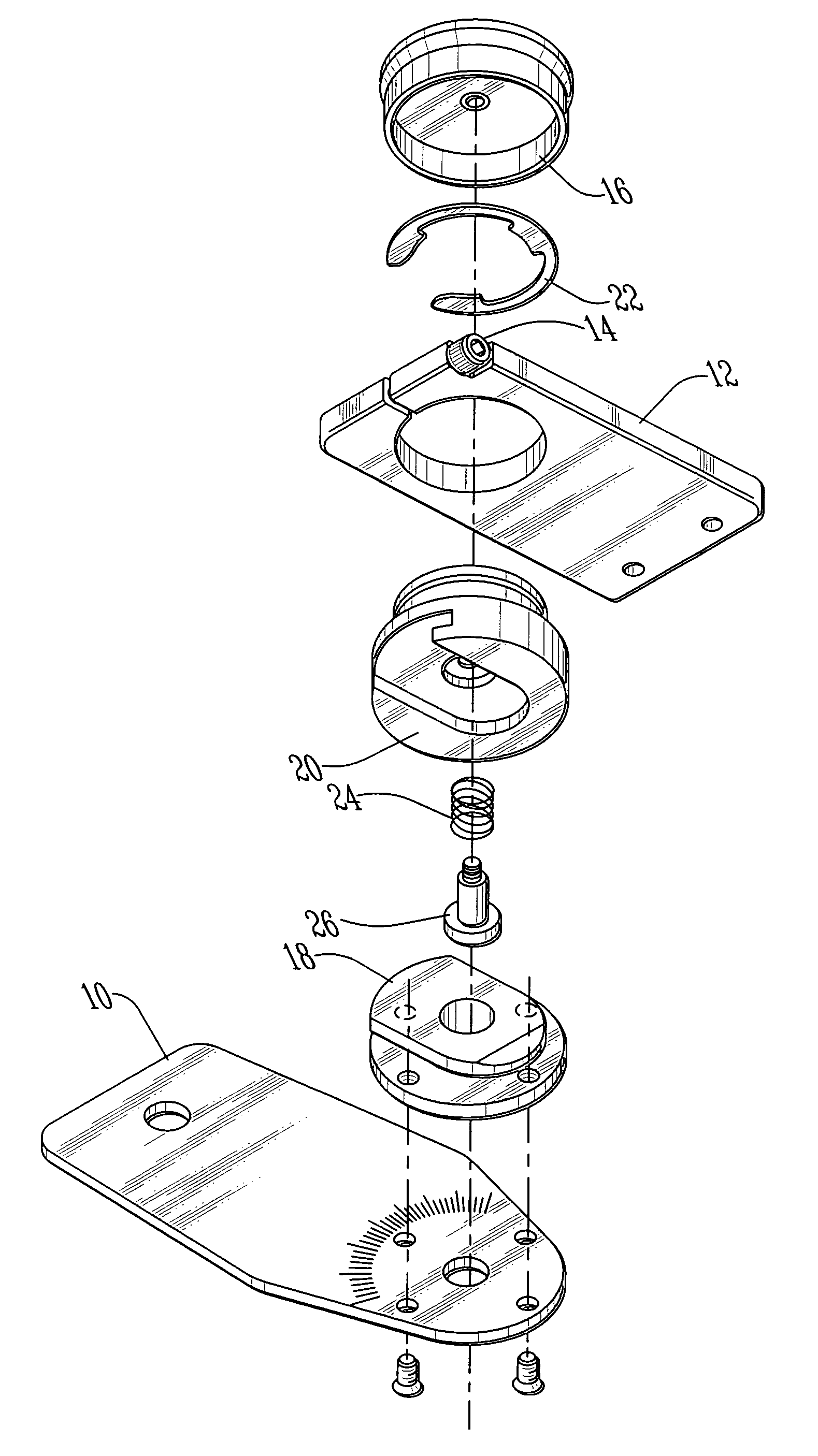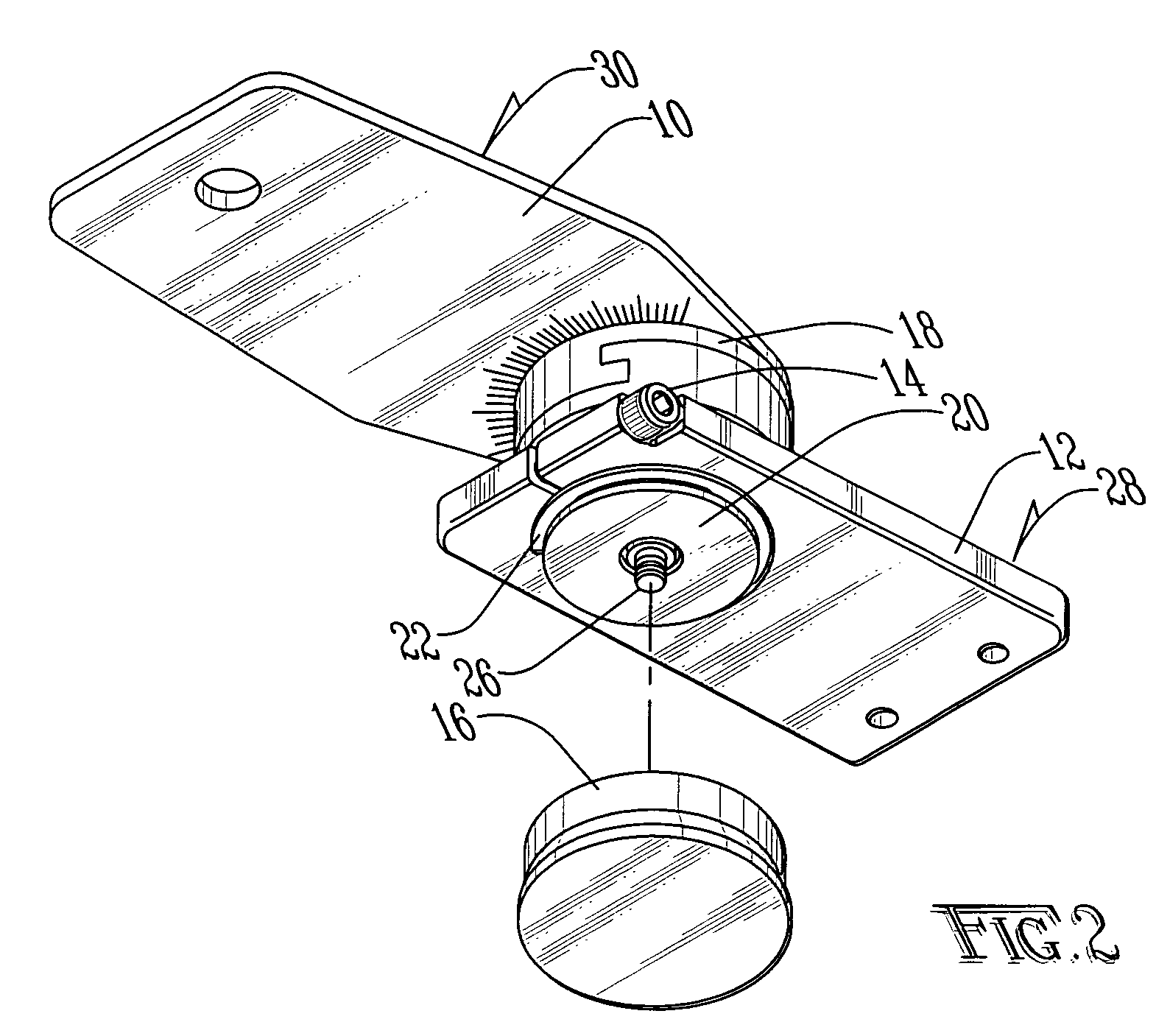Orthosis and footwear attachment mechanism for same
a technology of orthopaedic shoes and attachment mechanisms, which is applied in the field of orthopaedic shoes and footwear attachment mechanisms for same, can solve the problems of complicated process and render the process of fitting shoes or shoes to infants quite difficult, and achieve the effect of facilitating and safe footwear fitting and facilitating the fitting of footwear
- Summary
- Abstract
- Description
- Claims
- Application Information
AI Technical Summary
Benefits of technology
Problems solved by technology
Method used
Image
Examples
Embodiment Construction
[0018]With reference to FIGS. 1-4, a preferred embodiment of a quick-release mechanism for an orthosis according to the present invention may be described. As shown particularly in FIG. 3, the quick-release mechanism comprises two separate assemblies, brace assembly 28 and footplate assembly 30. These two assemblies may be snapped together to form a secure lock, and may be easily and quickly released from each other, as will be described below.
[0019]Footplate assembly 30 is comprised of footplate 10 and footplate fitting 18. Footplate fitting 18 is preferably attached to footplate 10 by screws, rivets, or the like. These screws, rivets, or like fasteners may also be used to attach footwear 38 (as shown in FIGS. 5 and 6) to footplate 10. Alternatively, footplate 10 and footplate fitting 18 may be formed of a single, integral part, or footplate 10 may be omitted and footplate fitting 18 attached directly to footwear 38.
[0020]Brace assembly 28 is composed of brace attachment plate 12, ...
PUM
 Login to View More
Login to View More Abstract
Description
Claims
Application Information
 Login to View More
Login to View More - R&D
- Intellectual Property
- Life Sciences
- Materials
- Tech Scout
- Unparalleled Data Quality
- Higher Quality Content
- 60% Fewer Hallucinations
Browse by: Latest US Patents, China's latest patents, Technical Efficacy Thesaurus, Application Domain, Technology Topic, Popular Technical Reports.
© 2025 PatSnap. All rights reserved.Legal|Privacy policy|Modern Slavery Act Transparency Statement|Sitemap|About US| Contact US: help@patsnap.com



